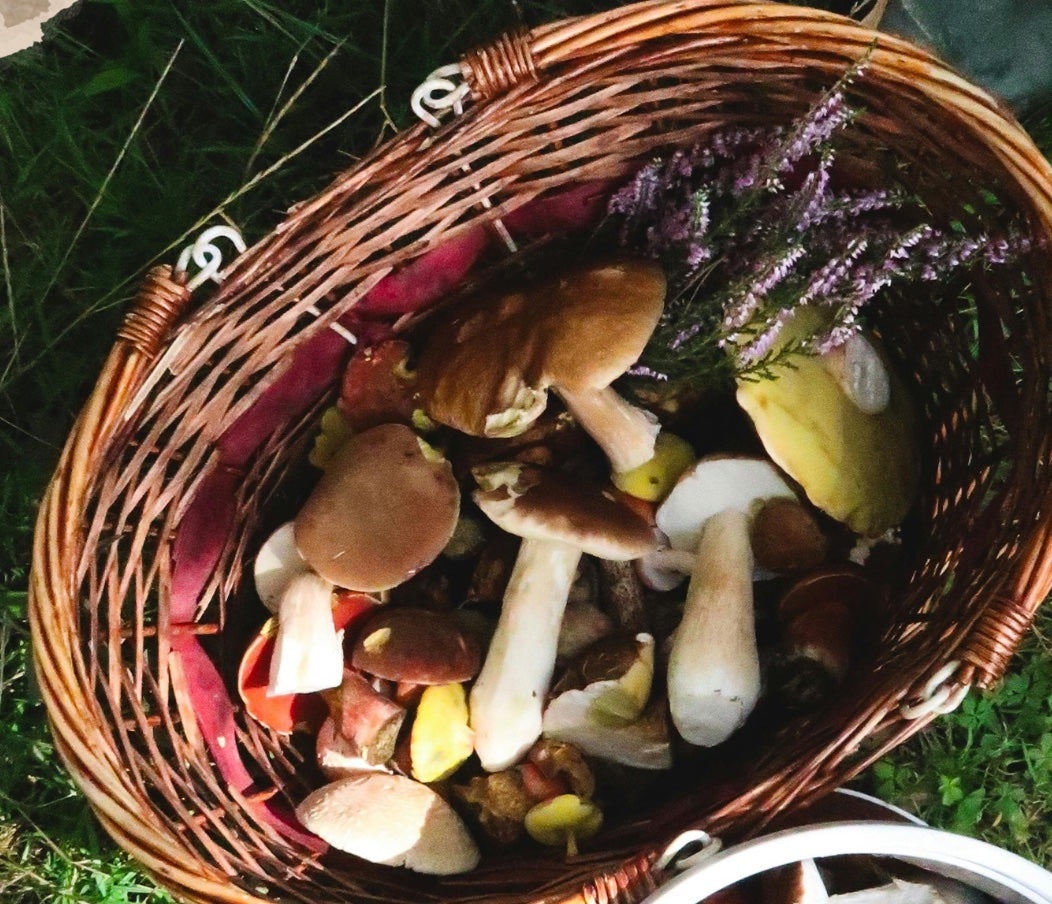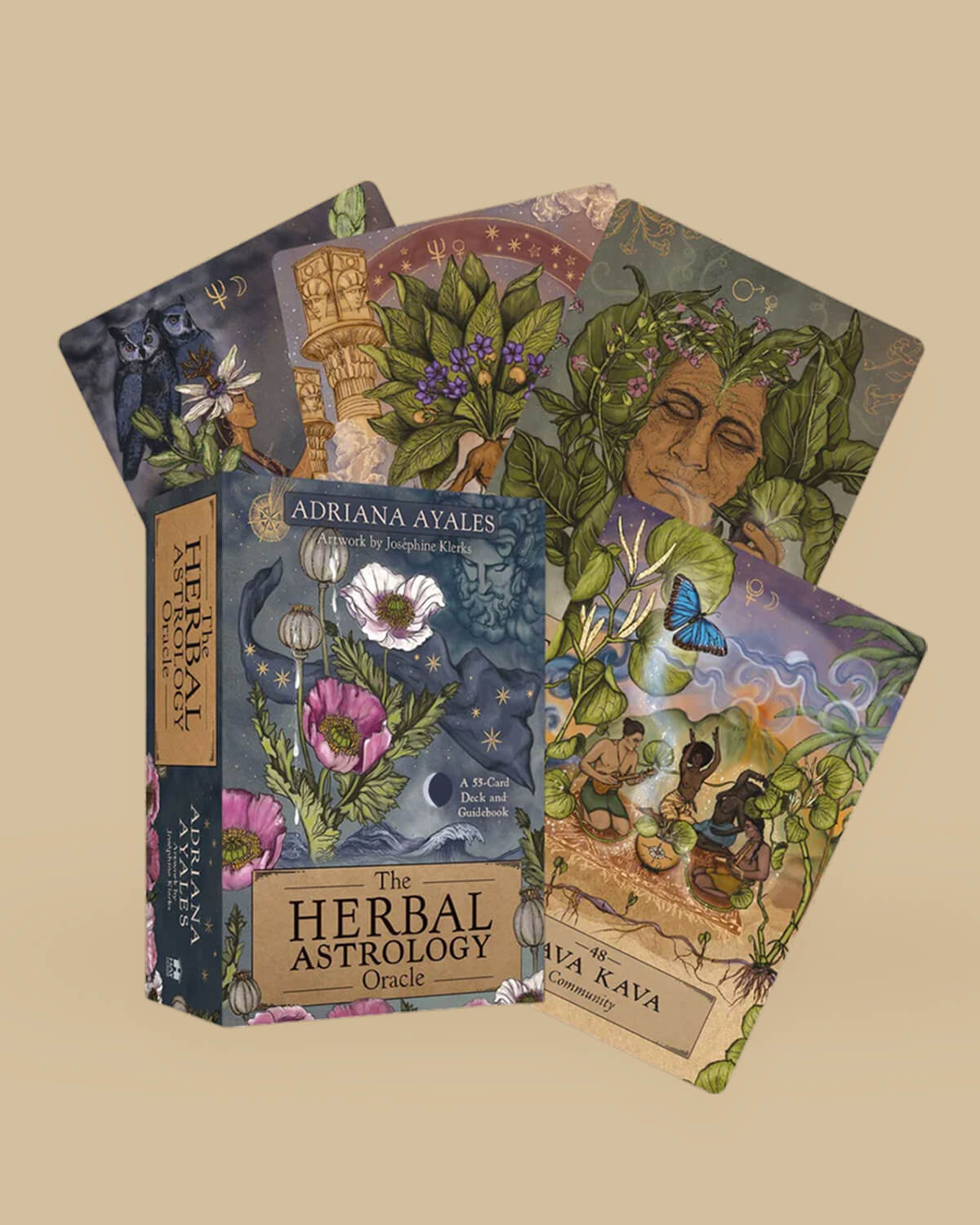
Spring revival brings blooming mushrooms, but do you know where to look for them?
Popping up under our feet this season are vast networks of edible fungi, following the herbs and the flowers in a magnificent symphony of reawakening. They offer up their plentiful bounty in the warmer months after spending the winter in dormant silence—so, how can we honor this time of rebirth and flourishing without straying far from home?
Spring mushroom foraging is a special treat for those who can strike the delicate balance between curiosity and caution.
While there are countless varieties of mushrooms in our backyards to delight in discovering, some of Nature’s most common edible gifts are morels and oysters. In this guide to spring mushroom foraging, we’ll cover those along with even more to look for, and how to find them. If you’re itching to get in the kitchen and try out some new mushroom recipes, scroll down for an added bonus!
Mushrooms are miraculous, mysterious, and often deeply medicinal.
Wild mushrooms can sprout overnight, with the reasons for and the location of their growth often eluding the foragers and researchers dedicated to chasing them in the woods. Knowing the conditions (temperature, moisture, elevation, etc.) of your local environment and the types of mushrooms that are abundant nearby can help you become an expert hunter of these wild delicacies. From brain super-tonics like Lion’s Mane to energizing “heal all” Cordyceps, fungi go beyond enhancing our culinary creativity, as they provide exceptional nourishment for our minds and bodies.
Beware of toxic or potentially fatal mushrooms.
Although they possess great potential to heal and fortify us, it is of equal importance that we steer clear of any mushrooms that could make us sick. A good starting point for budding foragers is to commit to learning how to accurately name the fungus family the mushroom belongs to (Agarics, Boletes, Milk Caps, Russulas, Amanitas) and be completely sure before consuming it. Also, novices should avoid deadly members of the Amanita family by not harvesting any mushrooms with “white gills, a skirt or ring on the stem and a bulbous or sack-like base called a volva” and mushrooms with “red on the cap or stem”, some of which may be deadly poisonous (Source: Wild Food UK).


This time of year is perfect for long walks in the woods and afternoons spent in the garden. Over the next couple of weeks, we invite you to go seek out seasonal specialties, challenge yourself to discover the magic of mushrooms, and experiment with cooking up your shroomies. Some people do eat raw mushrooms, but most cannot tolerate this, so we recommend you avoid potential gastrointestinal distress by whipping up one of the exquisite dishes below. Even wild edible species can cause a stomach ache, so it’s best that you prepare your plate with some heat, some spices, and some love.


Prized for their rich, nutty flavor and meaty texture, Morels are high in protein, fiber, and various vitamins and minerals, including vitamin D and potassium.
🔎 How to find them: Morels typically grow in wooded areas, especially near living or dead hardwood trees like elm, ash, oak, and poplar. Look for them in early spring.

Chicken of the Woods mushrooms have a mild, chicken-like flavor and a tender texture. They are an excellent source of protein, fiber, and various vitamins and minerals.
🔎 How to find them: Chicken of the Woods mushrooms grow on the trunks or stumps of living or dead hardwood trees, particularly oak and beech. Look for them in late spring and early fall.

Prized for their immune-boosting and anti-inflammatory properties, Maitake are rich in vitamins B and C, as well as minerals like potassium and selenium.
🔎 How to find them: Maitake typically grow at the base of oak trees. Look for them in late spring and early summer, usually after periods of rainfall.

Oyster mushrooms are a good source of protein, fiber, and various vitamins and minerals, including B vitamins and potassium.
🔎 How to find them: Oyster mushrooms are saprobic, meaning they grow on dead or dying trees, especially hardwoods like oak, beech, and poplar. Look for them on the trunks or fallen branches of trees in moist environments. They are commonly available in the spring, summer, or fall.

Lion’s Mane mushrooms are prized for their potential cognitive and nerve-regenerative benefits, and are rich in antioxidants, vitamins, and minerals. A well known nootropic, components and extracts of Lion’s Mane have proven antibiotic, anti-cancer, neuroprotective, fat- and glucose-lowering effects. This mushroom is also known to protect against stomach ulcers, reduce anxiety and depression, aid cognitive function, and decrease inflammation.
🔎 How to find them: Lion’s Mane mushrooms typically grow on the decaying wood of hardwood trees, especially beech and oak. Look for them in late spring and early summer.

Puffballs are often referred to as the “breakfast mushroom” because they pair so well with omelets. Also try them sliced thick and drizzled with oil on the grill. Puffballs are also a great substitute for any tofu recipe you might have, like these golden noodles.
🔎 How to find them: Look down! These mushrooms never grow on trees or logs, so you’re going to find them on the ground. Grassy areas like fields and open meadows are their natural habitat, especially prone to well-fertilized areas like golf courses and lawns. If you have a keen eye, you may also discover them in the undergrowth of sun-loving trees like aspen, in late summer or early fall. So while these typically aren’t available to forage in the spring, you can spend this season getting to know these powerful mushrooms, one of which can produce as many as seven trillion spores and possesses more life-generating potential than any other living thing on Earth!

These mushrooms offer a gelatinous texture and are prized for their culinary versatility. They appear during spring after periods of rain or high humidity.
🔎 How to find them: You can find Wood Ear mushrooms throughout the year growing on deciduous trees like elder (where it’s found 90 percent of the time). Look at both dead and living tree wood in the cooler months of spring and fall, right after heavy rains. Saturation from the rain makes them enlarged; whereas in dry conditions, they’re harder to spot because they shrink up.

Educate yourself.
Before you start foraging, educate yourself about the types of fungi that grow in your area, especially the ones that are safe to eat and those that are toxic. Invest in a good field guide!
Start slow.
If you’re new to foraging, start with easily identifiable fungi like morel mushrooms, which are one of the most sought-after spring mushrooms and are relatively easy to identify.
Know your environment.
Different types of fungi thrive in different habitats. Learn about the habitats where different types of fungi are likely to grow near you.
Timing is everything.
Timing is crucial when foraging for fungi. Many spring mushrooms have short fruiting seasons, so you need to be in the right place at the right time. Keep an eye on local weather patterns and temperature changes, as these can influence when mushrooms emerge.
Be prepared.
Bring along a knife, a basket, or a mesh bag for collecting mushrooms. Avoid using plastic bags, as they can cause mushrooms to sweat and spoil more quickly. It’s also a good idea to carry a field guide or a mushroom identification app to help you confirm the species you find.
For even more about foraging dos and don’ts, plus our full introductory guide to more herbs to forage in the spring, visit the blog to deepen your knowledge of sustainable approaches to getting wild.














